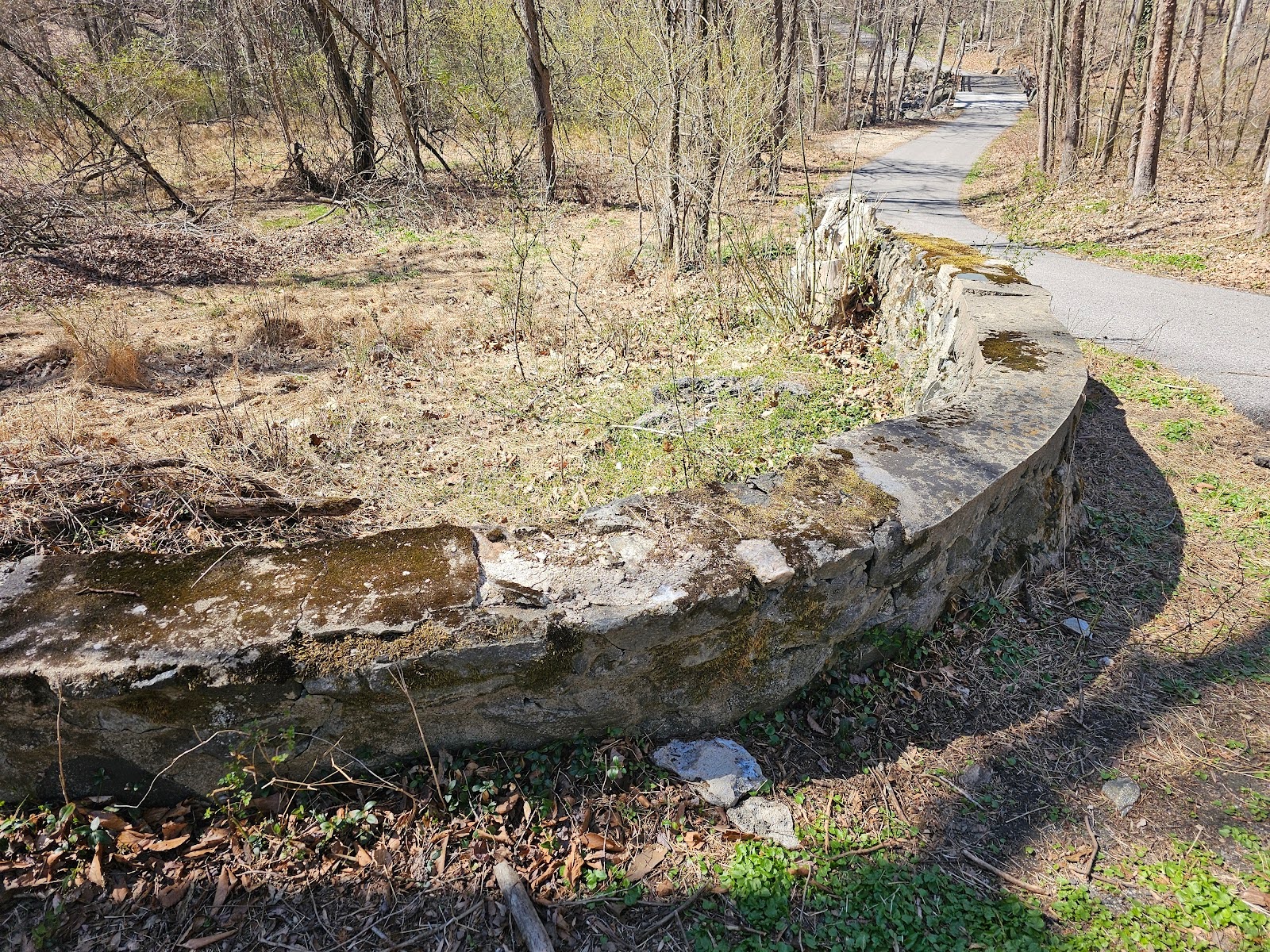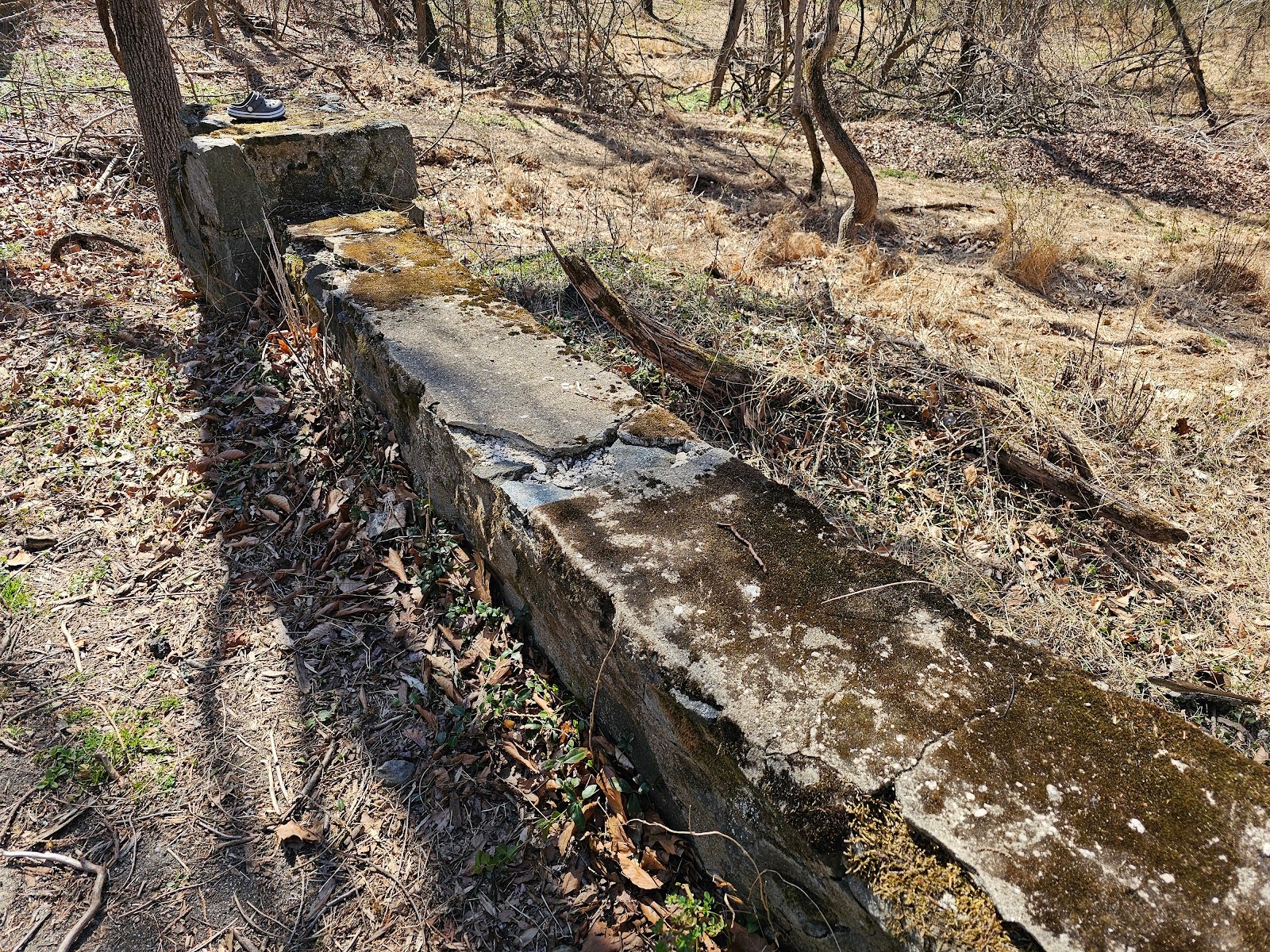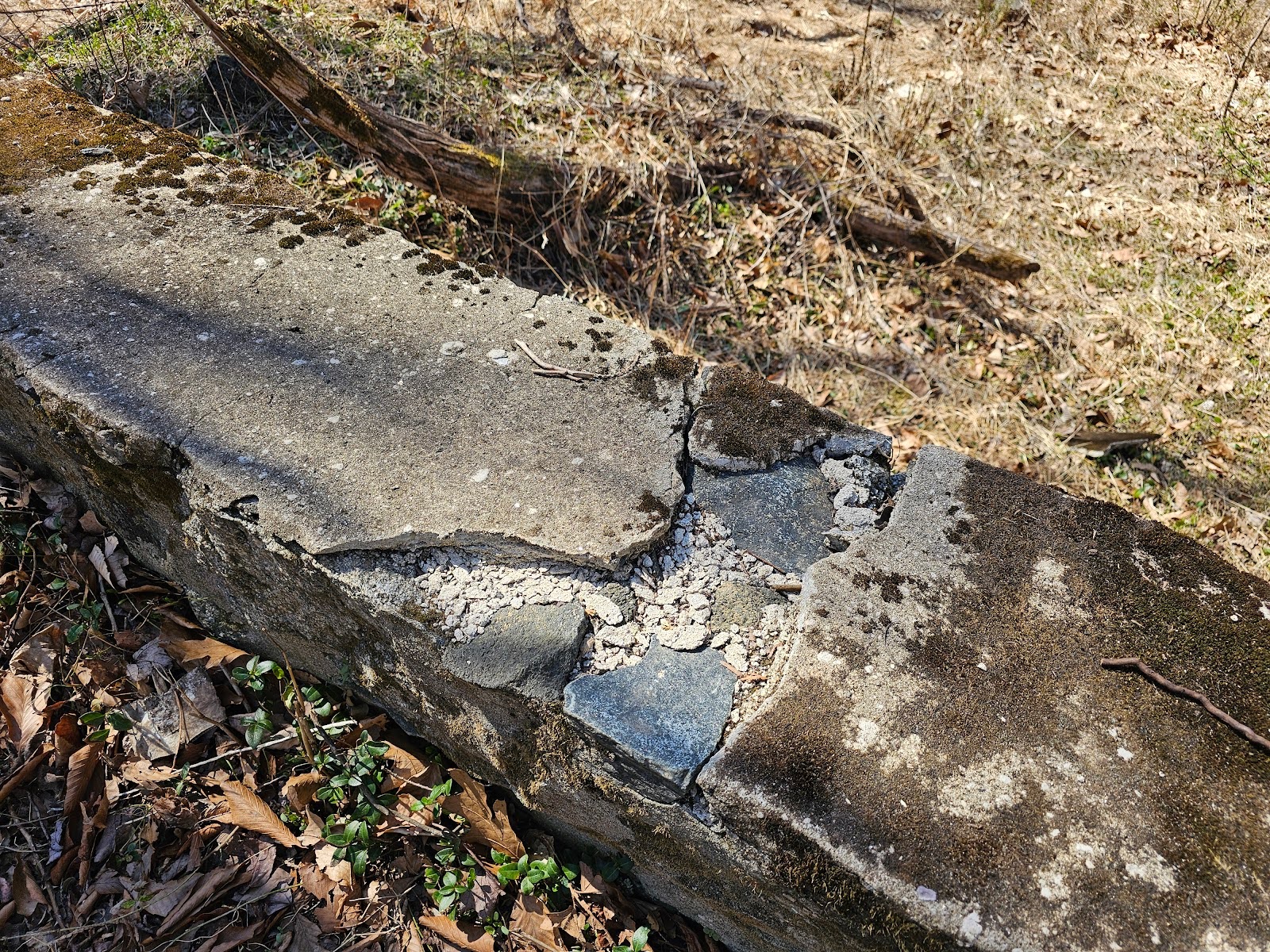Cementitious Parging in Place of Coping Stones
Recently in the area outside of Washington DC, we got to look at a couple different examples of interesting historic architecture. This particular retaining wall, shown in the picture below, was built many decades ago. The majority of the stone used in the construction of this wall is made from granite and the mortar is made from a variety of different materials. A more modern mortar has been used to replace some of the deteriorated mortar at the area near the top of the wall.
Interestingly, most retaining walls, today, made with an ashlar or even a rubble type stone, we’ll often have a particular type of differentiating stone or masonry installed at the top. That top course of masonry is generally referred to as a coping. Coping stones are generally wider and flatter overall and have a larger surface area, due to being wider. The larger surface area means that they will have a lower ratio of joints to field area of the masonry, at least in this horizontal position.

It’s particularly important to protect the horizontal area of the top of a retaining wall. Even though we refer to this as a horizontal area, all retaining walls should be built so that the stone or masonry at the top, it a position of a coping, should have a bevel or cant, generally that bevel or cant will shed water towards the lower side of the Earth on the non-retained area of the retaining wall. From there, generally, the water can drain away into the lower grade. If the grade adjacent retaining was properly built it should have a positive slope away from the retaining wall.

With the moss and the debris on top of the wall, it looks like the cementitious parging coat, similar to a mortar or concrete, is actually maybe an original part of a wall, but when you look closer, as you can see in the picture below, it’s totally different.
This cement cap was applied after the mortar and stone work at the top of the wall started to break down. At this horizontal type surface, it becomes a puddle area where water can build up and sit, like a tray. Any depressions or deviations downward in the horizontal surface become small pockets that hold and trap water. Before this near-flat cement coating was applied, the wall retained mortar in those joints and that retention of water accelerated the breakdown of the mortar joints.
breakdown and deterioration occurs throughout the seasons of the year, but particularly during the winter seasons when there are freezing temperatures, the damage accelerates significantly. Freeze-thaw cycles coincidence with precipitation and exposure to water into the constituent parts of the top of the wall lead to cracking and break down through the expansion that happens during freezing temperatures. If the wall was kept dry, it wouldn’t have the same negative effect or consequence, but here the wall is just exposed to the elements.

In the picture above, you can see an area where the newer and flatter cement surface has deteriorated and broken away in a a specific limited space that spans from the front edge to the back edge of the wall, almost in a strip. The Unbroken portions of cement remain largely intact on both sides. On the right side, in the picture above, you can see the cement is covered with this moss type of biocolonization material. There’s less of that growth on the left side. Generally, areas of further deterioration will be more susceptible to bio colonization of growth of plants and moss type materials.
In this coming week, we’ll look at additional pictures and continue this discussion. We’ll also talk about some of the chemical reactions that take place that lead to deterioration of cementitious type mortars.
Our company, Dupont Tuckpointing and Masonry, specializes in masonry restoration, historic brick repointing, and tuckpointing services in the Washington D.C. area. These buildings are uniquely historic, and their preservation requires skilled masons who are technically trained in the best practices and knowledge of proper restoration techniques.
We understand the significance of maintaining the architectural integrity of these historic structures, and our team of experienced professionals is dedicated to delivering exceptional craftsmanship. Whether you require masonry restoration, tuckpointing, or brick repointing services, we are here to help.
At Dupont Tuckpointing and Masonry, we take pride in our work and strive to ensure that every project is executed with the utmost care and attention to detail. We are committed to preserving the rich heritage of Washington D.C.’s built environment for generations to come.
If you have any questions or needs regarding masonry restoration, historic brick repointing, or tuckpointing services, please do not hesitate to reach out to us. We would be delighted to assist you and provide you with the expertise and quality workmanship that your historic property deserves.
You can reach us by telephone at (202) 796-7644 and you can reach us by email from the contact form on our website at https://duponttuckpointingmasonrydc.com/contact-us/.




